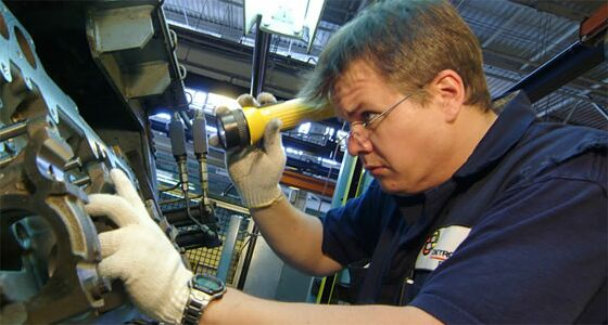Quality control is basically a conformance test on goods. Compliance is a quality which proves how the attributes of the goods meet the requirements of the regulations (national, professional, company), contracts, control direction, documents.
The checks refer to a certain quantity – batch of goods.
Batch describes the quantity of the goods submitted for certification stated by a specification – most likely a regulation.
The quality control is completed with traditional or statistic methods.
In case of non-statistic (traditional) methods the control inspector decides about the quality and size of sample.
Using the statistic method the company or manufacturer collect data regularly which are sorted by certain selections and stated by statistic qualities. This improves the manufacturing and preparation, also helps to prevent problems during the manufacturing – from minimal data get maximum amount of conclusions.
There are 4 ways to test the batch:
-
l00% testing means that every single piece in the batch is tested.It doesn’t mean that every single product gets fully tested but certain qualities are getting tested on every each product. Sometimes it causes that some of the products aren’t accepted (rarely some products get rejected). The destruction test is impossible in practice. This testing form is the most expensive and doesn’t give 100% security. Still applicable in unique cases.
-
During the random testing the certain part of the batch is checked (for example 10%).The quantity of the sample is usually optional. If the tested batch is too big it can be expensive but otherwise the faulty product can be missed. With too many non-adequate products is often no mandatory strategy.
-
Compare to the previous two testing technics the statistical sampling is more effective and reliablebecause it uses maths statistic and relatively small amount of samples. The sampling test can either investigate if the samples meet the requirements or the measurement analysis compares the rates.
-
4. Most of the time the manufacturer gives out a statement (quality certificate) which includes all the details about the product. Here is important the quantity of the tested products and what tests are included in the statement.
There are different controls:
-
Control of third-party goods or base control;
-
Control during the manufacturing process;
-
Final control.
Control of third-party goods or base control
The goal of this control is that only those products will end up at the warehouse which are made in accordance to the requirements.
Control of third-party goods includes two areas:
-
Test of materials, products and components from external sources, also
-
Control of products and components made in the different department or factory of the manufacturer.
The control of third-party goods used to use the 100% testing and also the random testing which tests only a certain part of the products chosen optionally. Recently the most popular control is the statistical testing.
If there are existing quality control systems present – the supplier has to have proved quality control system too – and also certain goods can be accepted by manufacturer declaration.
Control during the manufacturing process
This type of the control tests the products during their manufacturing to recognise the faulty products as soon as possible.
The control during the manufacturing process has the following stages: testing of the first product, testing during the process, in-between the procedures and after the process.
-
The importance of the first product testing is only in quantity or standardised production. In the stage of the standardised production the first few products are tested in detail and after the approval the manufacturing process can start. In case the machines are reset or there are revised tools used – the test has to be repeated.
-
Testing during the procedure in usually completed by the employers (by individual or small production) or by controllers.
-
Testing in-between the processes are completed either after each procedure or after a certain process only. The control examines how the standards and requirements are completed. They usually focus on the previous mistakes and their correction.
-
Testing after the manufacturing process is needed if the product or element already passed a few technology processes, ready for further application or it’s finalised. This control tests if the ready product or element is meet the requirements and if is suits for further use.
The reading of the controlled samples are written down. The designers, manufacturers and controllers are reusing those readings in case of questionable issues, or in an application of a new technology or control system.
They can be also used for the quality of the goods during the delivery.
From the quality control view is the most important the testing during the process. In this case only the measure testing gives enough information for the control of the quality manufacturing process.
Final control
The final control will most likely give the right conclusion about the quality of the tested goods. This control is important when the good are being transferred from the manufacturer to the buyer.
The goal and function of the quality control have changed recently. It works as part of the company’s quality system. The focus is on the arrangements and activities to avoid the faulty products rather than the demonstration of faulty goods and inappropriate service. Its role is very important in the cases where the faulty goods can cause serious loss. Construction activity is one of them where the requested conditions of the control areas have to be checked before the start of the critical work session (for example the handover of a certain machinery.
Source: https://www.muszakiak.hu


